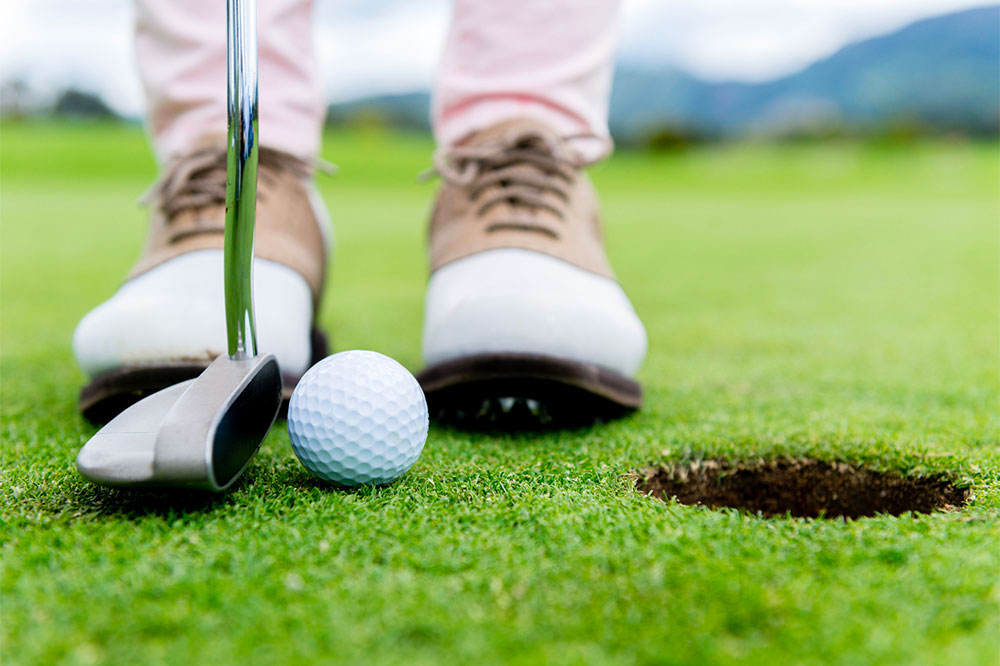
8 common golf mistakes and tips to fix them
Learning a new sport can be fun but also challenging. Golf may appear straightforward as it only involves striking a ball into a hole. However, there are many complexities to study. It also takes a lot of practice to master, so learning to be patient is perhaps at the top of this list. To elevate one’s experience as a golf novice, here are eight common mistakes people make and how to fix them.
Hyperextending the wrist
Golf’s technicality is no secret. Hyper-extending the wrist, even by as little as 13 degrees, can make hitting the right shot much more challenging. There are three simple ways to recognize this error:
Practice with a professional or participate in group training sessions.
Practice the swing in front of a mirror.
Use biofeedback tools to provide detailed insights.
Correcting the error is simple, too! Simply focus on the wrist position at the top of the backswing and maintain balance from the top to get the right clubface impact for a clean, smooth shot!
Wrong alignment
Without the proper alignment, hitting the right shot becomes much more difficult. Most other sports have a visible target, making it easier to align oneself. With golf, however, this becomes a lot more complex. Beginners must remember that the ball’s movement depends on the position of the clubface’s impact and how their body is positioned. This takes a lot of practice, precision, and focus to get right.
Using golf alignment sticks on the course can do the trick for those new to the game.
Improper ball placement
Having a solid swing is not the solution for a great shot. One also needs to have proper ball placement or positioning. Placing the ball too far ahead or behind impacts its launch and carry distance. It could also result in more misses!
Don’t worry, though! There’s a simple way out of this mistake. Place the ball toward the inside heel of the lead foot for a driver. Then, move it back with every club. For wedge strikes, the ball must be placed between one’s center and the heel of the back foot. Before teeing up, watch a few professional videos to really understand the nitty-gritty of every shot.
Bad posture
Golf is unlike any other sport when it comes to posture. In the beginning, it can even feel “incorrect” to stand a certain way. With regular practice, however, one quickly picks up how to posture themselves for a shot.
Golfing with bad posture can result in a limited ability to rotate, keep the club on the path, and make the right impact with the clubface. One golfing expert suggests that the right posture feels like sitting on a stool, not bending the knees. Here’s a simple guide to help amateurs get their posture right:
Ensure that the legs are reasonably straight and not folded or bent.
Tilt the chin forward.
Push the derriere out.
Tense hands
Holding the club with too much tension or force limits upper-body movement, especially the backswing. There are two ways to correct this error:
One, always begin with a light warm-up to limber up the muscles. To do this, take smooth shots with each club, starting with the wedges and moving up to the fairway metals and driver. This will open up the body.
Next, avoid holding the grip too tightly. Try to achieve a comfortable hold on the club, and release any pressure in the forearm. Use an oversized grip to make this easier.
Focusing too much on swing intensity
Sure, having a solid swing is crucial, but it is equally essential to have the right rhythm and tempo for a smooth, precise shot.
To work on tempo, amateur golfers must practice counting aloud from the moment they step up to the ball to the second they strike it. This counting trains the mind to focus on the ball and the swing, making way for effortless rhythm.
Lack of feedback mechanism
Hitting the ball aimlessly does not help improve one’s game. To proactively work on one’s golfing skills, utilizing feedback is essential. When playing alone, use tools like clubface tape or practice at a station with alignment sticks. Players can also choose to practice in front of a mirror or record themselves. Doing so will help identify errors in one’s posture, positioning, alignment, and swing. While playing with others, seek out the feedback of experienced players to slowly but surely continue progressing.
Using the wrong club size
Non-golfers are often under the impression that all clubs are the same. That’s plain wrong! Believe it or not, golf happens to be one of those sports where the equipment shares the blame with the players. While starting, many use a gifted or basic store-brought set. But with time, getting a custom-fitted set of clubs makes all the difference. With an ill-fitted club, golfers risk topping the ball, hitting a thin shot, or even injuring their spine.
Although it is a significant investment, aspiring golfers should consider buying custom-fitted clubs. Individuals can also invest in golf carts to make the sport more convenient. Don’t forego a set of well-fitted, adjustable golf cart covers made of waterproof material, as they can protect the cart against environmental damage and ensure it keeps looking like new!


